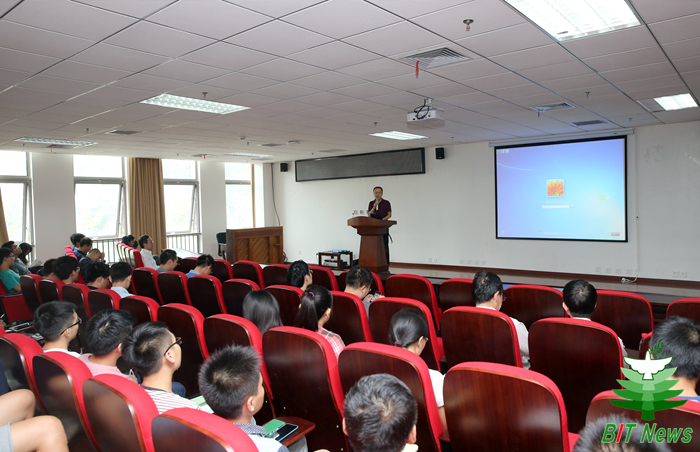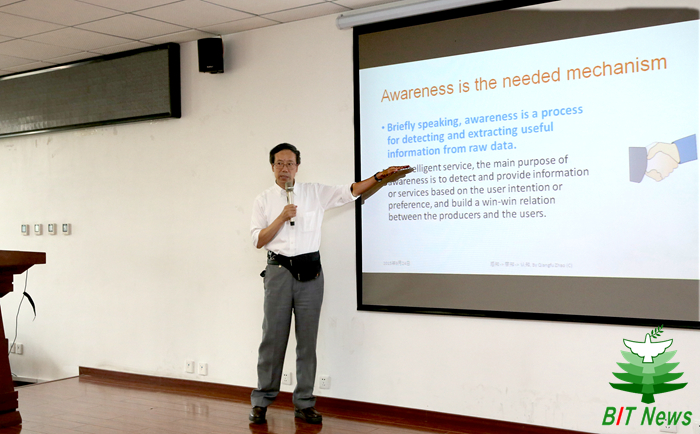日本會津大學趙強福教授來北理工進行學術(shù)交流
發(fā)布日期:2015-09-24 供稿:信息與電子學院 富景馨 攝影:郭強
編輯:新聞中心 郭強 閱讀次數(shù):
應(yīng)信息與電子學院邀請,日本會津大學趙強福教授于近期在我校訪問交流,并于2015年9月24日在信息科學實驗樓202報告廳開展了“21世紀學科前沿”學術(shù)交流活動,作了題為“應(yīng)對大數(shù)據(jù)挑戰(zhàn)的核心技術(shù)之一:察知科學與技術(shù)”的學術(shù)報告。報告會由信息與電子學院龍騰院長主持,出席報告會的有信息與電子學院的教師、本科生及研究生等共180余人。

趙強福教授首先簡單介紹了Aware Theory的基本概念和內(nèi)涵,然后清晰透徹地介紹了3-Value Logic Aware System模型;在此基礎(chǔ)上,形象具體地通過實際例子介紹了Aware Theory在Intelligence Home和Information Security等方面的應(yīng)用。趙教授的報告圖文并茂,生動活潑,與會師生認真聽取了此次報告。報告結(jié)束后,趙教授回答了老師和同學們的相關(guān)問題。

通過這次學術(shù)交流活動,使信息與電子學院師生對察知科學與技術(shù)有了深入的了解,拓展了視野,對選擇研究方向和開展科學研究有很大幫助。
趙強福教授簡介:
Dr. Qiangfu Zhao received the B.S. degree in Computer Science from Shandong University (China) in 1982; the MS. degree in Information Engineering from Toyohashi University of Technology (Japan) in 1985; and Ph.D. degree in Electronic Engineering from Tohoku University (Japan), in 1988. He was an associate professor from 1991 to 1993 at Beijing Institute of Technology; associate professor from 1993 to 1995 at Tohoku University (Japan); associate professor from 1995 to 1999 at the University of Aizu (Japan); and tenure full professor since 1999 at the University of Aizu. He is the head of System Intelligence Laboratory; Director of Computer Science Division; associate editor of IEEE Transactions on Cybernetics; associate editor of IEEE SMC Magazine; and associate editor of the International Journal of Machine Learning and Cybernetics. He is the founding co-chair of the Technical Committee on Awareness Computing in IEEE Systems, Man, and Cybernetics Society, and founding co-chair of the Task Force on Aware Computing in IEEE Computational Intelligence Society. He has initialized, organized or co-organized several international conferences; edited or co-edited several journal special issues; and published more than 180 referred journal and international conference papers related to optimal linear system design, signal/image processing, neuro-computing, evolutionary computing, awareness computing, and machine learning.
分享到:
